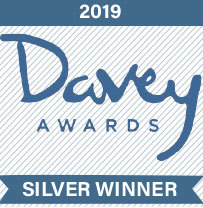Connected: The History of Social Media
By Black Bear Design on 02/2/2017
To appreciate the history of social media, it’s beneficial to have insight into the history of the internet first. The internet was by no means the first great invention of man, however, it has become one of the most revolutionary lenses of communication, data sharing, and commerce that exists today.
Virtually one-third of the world’s population has access to the internet, creating a web of rapid communication like we’ve ever seen before. The invention of the internet has formed for itself an incredible modality for collaboration and communication throughout the world, eliminating the distance two users might have between them.
With such ability to communicate directly with someone on the other side of the world, or even in the room next to us, it was inevitable that platforms would be created to allow for information sharing in a social network setting.
Enter: social media.
The Birth of Social Media
In the early to mid-1990’s, the era of the “Dot-Com Boom,” the internet became a common virtual household item. In 1997 the first social media site was created and connected people across the country. This site was known as Six Degrees and was the first social media networking site of its kind, and at its peak, reached 3,500,000 registered users.
Despite its rising popularity, not enough people were reliably connected to the internet and the site eventually shutdown in 2000. In 2002, Friendster, the social media site credited with starting the massive social networking boom was invented. Friendster, like Six Degrees, allowed users to upload pictures and profiles and provided a feature that showed how you were connected with a stranger through your friend circle (sound familiar?).
However, unlike Six Degrees that didn’t have enough people engaged on the internet as a whole, Friendster experienced too many users to the site and couldn’t handle the load. Eventually, due to frustrating technical difficulties, users switched over to rival platform MySpace in 2003.
MySpace was the cutting-edge platform for musicians to get the word out about their music. It also allowed users to talk to each other, create “top 8” friends lists, and write small blog posts allowing their audience into their world. MySpace eventually became the most popular social media site in the world in 2006. It continues to grow until users become frustrated with the poorly-evolving layout of the site and eventually leave it for Facebook.
Now We’re Getting Somewhere
With the trial-and-errors of the first generation of social media, the rise of social networking begins to take off in the mainstream in the early to mid-2000’s.
LinkedIn, today the world’s most popular professional networking site with over 100 million registered users, was the first site to pop-up following MySpace’s massive popularity in 2003. Currently ranked as the 18th most popular website on the internet today, LinkedIn has revolutionized professional networking via social media and hiring solutions for companies.
Following LinkedIn’s success, the birth of Facebook in 2004 completely transformed social media as we know it. Ranked third only to Google and YouTube in web rank, Facebook has become synonymous with social networking online. With over 1.87 billion monthly users, almost a quarter of the global population, there’s no stopping the movement this platform has created.
In addition to Facebook, other sites like YouTube, the world’s largest video sharing network, Tumblr, Instagram, WordPress, and Pinterest were all invented to serve various purposes. The rise of social media for different outlets of expression, whether it’s videos, recipes, pictures, practical information, or general content sharing, is only expanding to fit niche communities and demands.
So Where Do We Go from Here?
It’s brutally apparent that something huge has started on the internet and it’s nowhere near stopping. In fact, just like the rise of the internet, the rise of social media has taken the world by storm. As the world becomes more connected, the news is disseminated in real time, protests and movements can be broadcasted to people across the world, pictures of loved ones can be shared when they’re not near, and questions can be answered instantaneously.
So now that we’ve got the hang of social media with over a billion users on one platform alone, where do we go from here?
As technology advances and digital literacy is now being taught at birth, all of the new technology coming out will be designed to fit the demands of social media.
Live video, for instance, is expected to increase tenfold in the coming years as video sharing becomes more popular. Apps like Periscope, Facebook Live, and YouTube Live will allow users to share their experience in real-time. This is even seen in the multi-billion dollar gaming industry as Twitch allows gamers to live stream their gameplay for any interested viewer to see.
The benefit of the rise of video on social media, and dedicated video apps is that businesses can leverage them to popularize their brand. Over 6 billion hours of videos are being viewed every month by billions of potential buyers. If businesses aren’t already involved in video production, even on a small scale, they should start today and begin growing their YouTube audience and then share those videos on social media. YouTube reaches more millennials than any other broadcasting platform available, so it’s uneconomical to not be taking advantage of those potential leads.
Augmented Reality is also expected to increase in usability and engagement in the coming years. Remember the enormous PokemonGo boom in July of 2016? There were over 20 million daily active users within three weeks of the app’s launch. By the second month of the app being on the market, over 500 million downloads were seen on devices around the world. Niantic, the app’s developer, saw an increase of $308 million upon the release of PokemonGo. And while Nintendo is merely an investor the Niantic app, they saw a $7.5 billion increase in net worth from the app’s launch thanks to stock.
The power and future of augmented reality economics is a treasure trove of good investment and revenue for companies on a large scale. It can be used for in-app marketing and commerce, as well as a way for brands to become recognized.
We’ve Come a Long Way
2017 only marks the second decade since social media has been available to the mainstream market. In that time, we’ve come from broken HTML sites that couldn’t handle the traffic, to holding augmented reality in the palm of our hand. To think of how the world will continue to become more connected socially is an exciting endeavor and one that businesses can benefit from. The rise of smartphones allows a huge percentage of the global population to stay virtually connected all the time. The power of leveraging a tool that billions of people willingly look at every single day is a cutting-edge market that needs to be studied, nurtured, and most of all, mastered.
So, what will the next Facebook or PokemonGo be? Leave your thoughts in the comments below.












